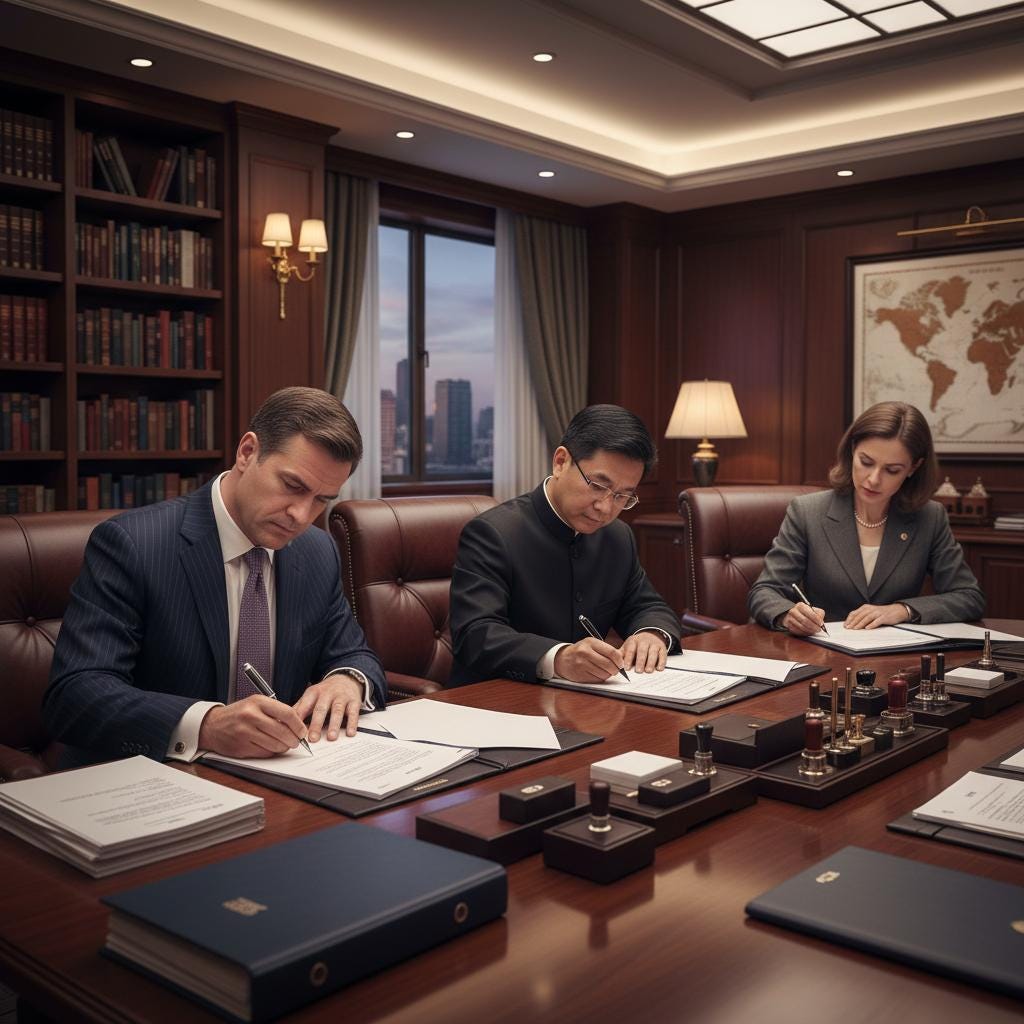The Future Brief: The Next Global Standard — Who Writes the Rules After America?
The world won’t be ruled by armies or GDP—but by whose culture defines the rules.
As we have discussed many times, the age of American dominance is over. But what is often missed is that this change is deeper than just who has power, controls trade, and dominates diplomatically. The central question of the next world order is not who has the biggest military or economy, but whose culture will define the global rules.
What’s Happening
T…



